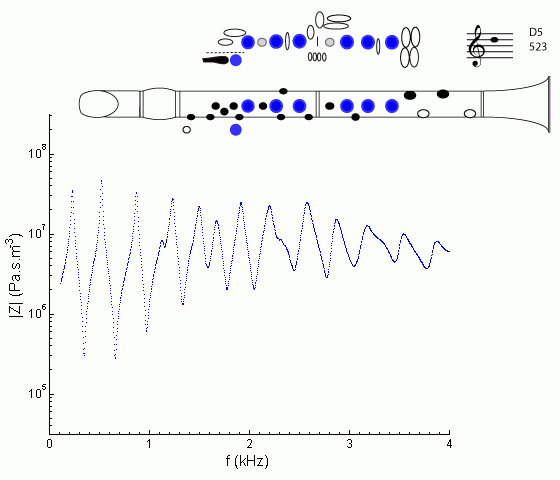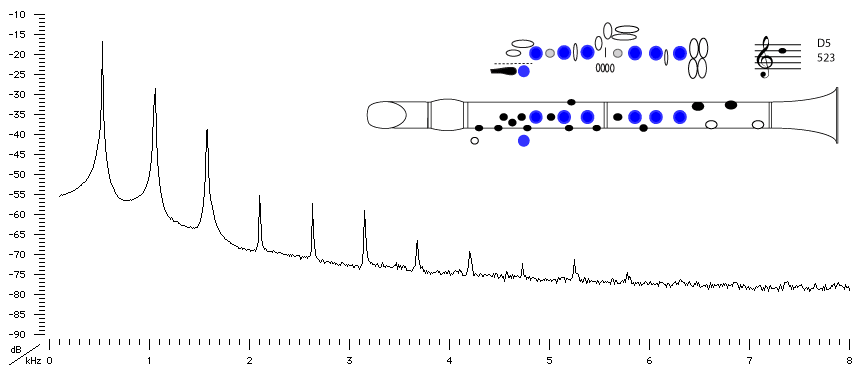| Acoustics of the clarinet |
Bb clarinet |
D5 |

|
Fingering Acoustic schematic Non-specialist introduction
to acoustic impedance Notes are the written pitch. |
Note how similar this spectrum is to that for G3. (Of course, the clarinet overblows a 12th.) The only substantial difference is the reduction in the first peak. The purpose of the speaker key is just that: to destroy the fundamental resonance so that the instrument will not 'drop down' to the lower register. See register hole for details.
Although it doesn't feel like it to your fingers, acoustically speaking, this
fingering is actually a cross
fingering: it has a closed tone hole below the first open one. This is responsible
for the shape being more irregular from about 1.0 to 1.6 kHz than are the curves
for C5 and C#5. (See discussion
on G3.)
For a general discussion of the clarino register, see the description on B4.

Sound spectrum
of a Bb clarinet
played using fingering for D5.
For more explanation, see
Introduction to clarinet acoustics
|
Contact:
Joe Wolfe
/ J.Wolfe@unsw.edu.au |